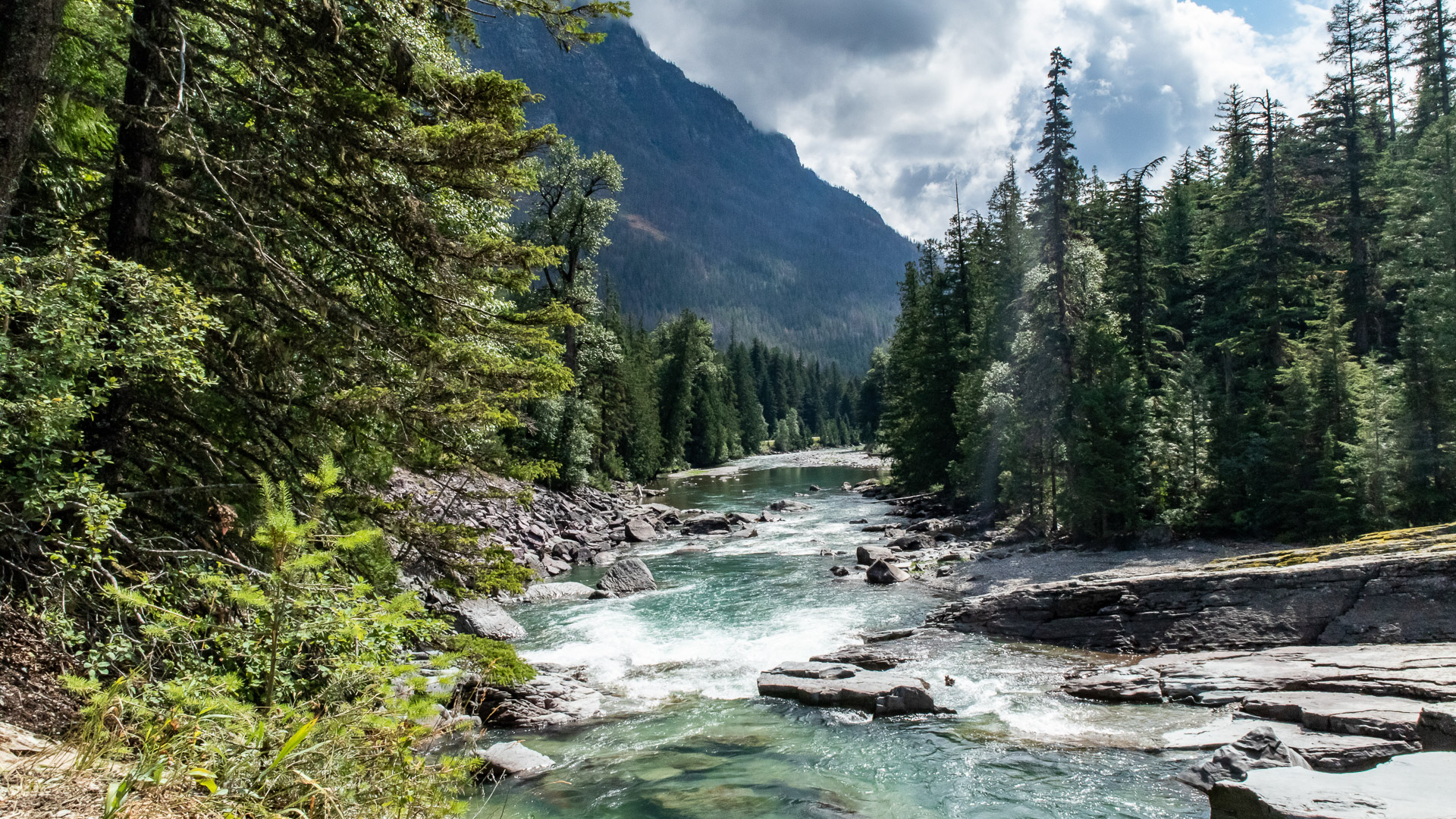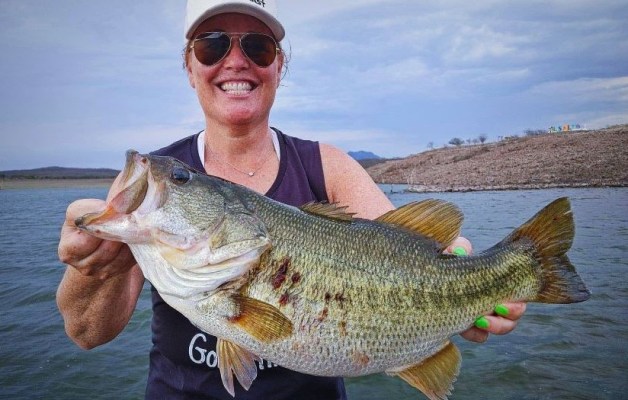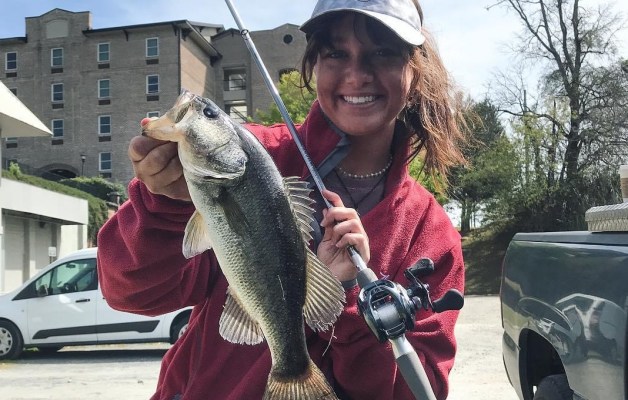
Glacier National Park was one of our bucket-list destinations from the start. We were so excited about it that we decided to stay in the area for two months. You’d think we would have explored Glacier thoroughly in that time, but to our surprise, and probably yours too, there was still so much more to see! We do, however, have a lot of tips for visiting the area and will plan accordingly for our next visit. If you have been thinking about spending some time in Glacier, don’t hesitate! It’s a very special place, and these seven tips will be very helpful in planning a phenomenal trip that works best for you and your family.

Lodging
Stay close! Whether you’re camping or staying in a cabin or hotel, there are lots of lodging options in the vicinity of Glacier. Many of our friends and other travelers boasted about the town of Whitefish. That advice led us to look for lodging in that area. Another popular town, where you’ll find a Target, Walmart and other well-known big-box retailers, is Kalispell. But our blessing in disguise was that neither town had two-month lodging availability for the duration of our stay. We did, however, really luck out and found Sundance RV Park and Campground located in the town of Coram. Turns out, it was only 5 miles outside the west entrance of Glacier National Park. Had we stayed in Whitefish or Kalispell, we would have been 40 minutes from the park entrance. We’ve learned the hard way that staying almost an hour outside of a national park makes adventure days tough because we travel with our pup. Unfortunately, dogs are not really allowed in most parts of Glacier (and many other national parks). With the exception of a few spots on the west side of the park, every adventure has to be earned with a long drive or long hike. If you, too, have time constraints with pets or kids, or you just don’t prefer long driving days, you will definitely want to consider how far you stay from the entrance to the park.

Driving Distance
Like most national parks in the west, Glacier is massive, covering 1,584 square miles. When visiting, be prepared to drive. Unless you are staying in the park, you’ll average at least an hour drive each day to your destination. To give you a better idea, it’s a little over an hour drive (without stops for photos) from the west park entrance to Logan Pass at the top of Going-to-the-Sun Road. And it’s almost a two-hour drive to the east side of the park near St. Mary Village and Many Glacier. In the opposite direction of Going-to-the-Sun Road, near the northwest park entrance, you’ll find the little town of Polebridge and the Polebridge Mercantile store with its famous huckleberry bear claws. From the west entrance, it is an hour drive, and then add another half hour to Bowman Lake or an hour to Kintla Lake. The driving can really add up, both in time in the car and gas expenses, but the best part about the drive is that the views never get old! And there are many opportunities to pull off to take in the views, enjoy seeing some wildlife and snap a few photos.

Going-to-the-Sun Road
Going-to-the-Sun Road is the only road that goes through Glacier National Park from the west to east side (or east to west side). Of course, you need a pass to enter a national park, whether you have the annual park pass or pay for the week. But in 2021, Glacier implemented a lottery-based permit system to limit the number of daily visitors during the summer season. This pass, costing a nominal $2 fee if you successfully obtain one, allows your vehicle access to the park between 6 a.m. and 5 p.m. and permission to drive Going-to-the-Sun Road. To obtain this pass, you could apply for the permit 60 days in advance. Or, if you are like us and decide to “just show up,” you have to apply at 8 a.m. two days prior to entering the park. For example, if you apply for the Going-to-the-Sun Road pass on Monday and get accepted, you can enter the park on Wednesday, and your pass is good for the following six days. If, however, you are not able to obtain a pass during your stay, you can enter the park before 6 a.m. or after 5 p.m. After Labor Day, they no longer require the additional pass, but the park fills up quickly, and we were often turned away from Many Glacier, Logan Pass and Bowman Lake as the park was “full.” It’s best to enter the park as early as possible to avoid those situations.

Apgar Village
Apgar Village is located at the south end of Lake McDonald and is the shortest drive when entering the park from the west entrance. We visited this area often in the evenings to relax and skip rocks. On days when we had the pass, we would go in and catch minnows off the dock and even took some phenomenal family photos here. It’s a pretty iconic landmark, with gift shops, a restaurant, an ice cream shop, cocktails to go and kayak and boat rentals. It’s also a great place for meeting up with others since there is limited to no cell service in the park. If you happen to bring in your own paddle board or kayak, there is a watercraft inspection station located at the village, too. You’ll need to stop here to obtain a pass for your watercraft to be able to put it in any of the Glacier lakes or rivers.

Lake McDonald
Lake McDonald is the first breathtaking view you’ll see when entering the west side of the park. Along the lake drive there are several pull-offs, so take your time enjoying the view, or even walk down to the lake for a closer look. Some of the pull-off areas have access points to the lake where you can spend the day. We frequented Lake McDonald in two areas. The first was Sprague Creek Campground, where they offer camping on one side and day use on the other. Here, we were able to put our paddle boards in the water and let our pup swim. At the north end of the lake, at the bridge near the Johns Lake Loop trailhead, is a quiet little spot not many people seem to frequent. We enjoyed picnicking and spending evenings at this spot on the lake. The river along the walk to the lake is often beautiful hues of green and blue and perfect for breathtaking photos.

Avalanche Lake
One of our top two favorite spots in the entire park is Avalanche Lake, and for good reason. It’s incredible and exactly what you’d envision a glacier lake to embody. The parking lot is about a 35- to 40-minute drive from the west entrance and is always crowded. Plan ahead when going or be willing to circle the parking lot. Trust us, it is popular for a reason, and you won’t want to miss out! Round trip, you’re looking at 6 miles on the trail. The first mile is through a beautiful cedar forest and is very easy. Most of the path is a level boardwalk. At about a mile, you turn left up a hill along the creek. You’ll hike the remaining 2 miles through the forest up the mountainside, with some inclines and declines, but the remarkable views will take your mind off the inclines. Our 4-year-old son hiked the 6 miles twice — the second time with his grandparents. There are many spots to take a breather and rest along the way if needed, and of course you’ll want to spend a good amount of time at the lake. Once you arrive at Avalanche Lake and take in the views, keep hiking along the trail to appreciate the lake’s beauty from a different perspective. The mountain behind the lake has multiple waterfalls cascading down it, and it provides an awe-inspiring backdrop to the jade-colored water of the lake.

Logan Pass
Logan Pass is home to the most popular visitor center in the park. It is also where you’ll find the Hidden Lake and Highline trailheads, which is why it’s one of the most popular areas of the park, located at the top of the pass in the middle of the east and west side of the park. While it has a decent-size parking lot, there is no way it can accommodate the thousands of visitors the park receives daily. We found it’s best to arrive very early in the morning or after 2 p.m. Both the Highline and Hidden Lake hikes can be rather long, so be sure to allow time in your day for the drive and hike. The Hidden Lake trail is either a 3-mile round-trip hike that takes you to a wooden platform overlooking the lake or a 6-mile round-trip hike if you continue on down to the lakeshore. This trail is known for its beauty and wildlife sightings. It is rather strenuous in the beginning. As you hike along a boardwalk, the elevation gain is considerable, with lots of stairs. You are directed to stay on the trail or wooden boardwalk at all times. There are only a few rest areas in the beginning. We saw several individuals benefit from using hiking sticks on this hike. For reference, our son’s grandparents thought the 3-mile hike to the overlook was more strenuous than the 6-mile hike to Avalanche Lake. The Highline trail is the other hike that originates from Logan Pass. It’s about a 16-mile round-trip hike, but don’t let that alarm you! You can turn back at any time; we made it 3.5 miles before turning back, making our hike a total of 7 miles round-trip. This hike is definitely called Highline for a reason. You’re literally hiking a very narrow trail along the mountainside with a steep cliff on one side for a good while in the beginning. The views are incredible, and some areas have a built-in cable for you to hold on to while hiking through. Both trails are equally spectacular and high on our list of recommended hikes for you to experience.





